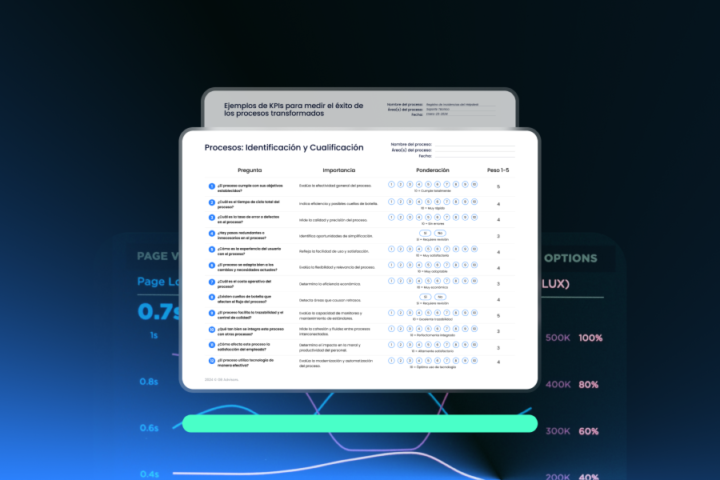 Addressing cyber vulnerabilities starts in the diagnosis and analysis of computer risks. This sole statement announces an overwhelming process for companies with little experience in digital security and vulnerability management.
Addressing cyber vulnerabilities starts in the diagnosis and analysis of computer risks. This sole statement announces an overwhelming process for companies with little experience in digital security and vulnerability management.
Now, what’s the point of diagnosing the computer risks of your company? Simple: From those results, you will be able to establish the best plan for the Vulnerability Management of your company. Let’s then start the diagnosis of computer risks of your company and find out what computer risks has been threatening your company without you even knowing it.
Where is your company in regards to computer risks and vulnerability management?
Knowing where’s your company regarding to the management of computer risks requires the diagnosis of computer risks. Such process involves carrying out these tasks:
- Inventory of assets sensitive to cyber vulnerabilities and threats.
- Inventory of common vulnerabilities and threats to which the company is exposed.
- Estimation of probabilities in which threats and vulnerabilities can attack.
- Possible impacts over operations.
As we can appreciate, this whole process aims at establishing adequate strategies to mitigate computer risks; which continues to be one of the main concerns of companies in terms of digital security. Following, there are the creation of controls; the preservation of data integrity and confidentiality; and the availability of resources.
Let’s clear up your particular digital spectrum landscape by means of the evaluation of the computer risks in 5 simple steps.
1. Digital security in terms of Vulnerability Management
 Even nowadays, there are many companies that have the wrong perception that their digital assets are fully protected with just installing a corporate antivirus; and instructing employees in the creation of secure passwords and passwords in conjunction with other user-centered practices. But the truth is that these measures are scarcely a step towards mitigation of computer risk.
Even nowadays, there are many companies that have the wrong perception that their digital assets are fully protected with just installing a corporate antivirus; and instructing employees in the creation of secure passwords and passwords in conjunction with other user-centered practices. But the truth is that these measures are scarcely a step towards mitigation of computer risk.
At another level; global statistics shows an important rebound in requests of third-party services for the early detection of technological weaknesses. Beyond the statistics, it is good to interpreting what’s behind such rebound: Many companies are still in the process of achieving optimal computer maturity levels. It seems like while they reach it, the best option is hiring the service of experts in the area of digital security.
However, there are also companies that prefer to develop their own mechanisms to deal with the mitigation of computer risks in first person. Let’s take a closer look at this last option.
2. Hiring IT Security Services vs. Developing Digital Security Teams (ITSec)
On the other hand; companies that reach certain level of computer security maturity usually count on a Digital Security teams that could develop and implement strategies to mitigate computer risks. Nevertheless; neither are these companies exempt from being victims of computer attacks; nor are they eternally up to date with the new trends in security.
Likewise, Digital Security teams are only one of the necessary aspects for the development of effective strategies: Logistics to reach optimal maturity levels of computer security include and demand resources; equipment; training; and necessary investment.
Regardless how you carry out each one of these activities; Vulnerability Management is now a complex need that requires analysis to reduce computer risks. Let’s briefly review its pros and cons.
3. Pros and Cons of contracting third-party services to mitigate IT risks
 In first place, the main advantage of contracting third-party services for the mitigation of computer risks is without a doubt the experience factor. So, expert companies in Vulnerability Management and Digital Security have the necessary staff; means and strategies to help your enterprise to mitigate computer risks.
In first place, the main advantage of contracting third-party services for the mitigation of computer risks is without a doubt the experience factor. So, expert companies in Vulnerability Management and Digital Security have the necessary staff; means and strategies to help your enterprise to mitigate computer risks.
In addition, contractors in Digital Security and Vulnerability Management also offer an objective and unbiased perspective of what happens in the deep layers of each company’s digital infrastructure.
On the other hand; the main disadvantage of hiring third-party services to mitigate computer risks is that the external consultant needs time to become familiar with the work dynamics. Then, knowing the objectives and business processes is a process that may take some time; and sometimes it even shuns to the companies that hires the external service themselves. And speaking about long processes…
4. Period of diagnosis and evaluation of computer risks
Following, we enter to the period of diagnosis and evaluation of computer risks. As you may already figured out, this period is subjected to the compliance of additional variables such as budget; experience; staff available; technical knowledge; security event recovery plans; update protocol; etc.
Is for this same reason that this stage may extend for long periods; which affects the budget. In this sense, a year is an ideal period to carry out penetration analyzes that detect new vulnerabilities and threats. In any case, this period is not an ultimate truth.
5. Subsequent miscellaneous activities
Of course, the cycle of diagnosis of computer risks must lead to an end. This phase compiles miscellaneous activities designed to correct and monitor the security measures resulting from the diagnosis.
Such miscellaneous activities include the application of patches; installation of updates; lifecycle of security management systems and tools; activities for replacement by End of Life; etc.
Other important aspects for the evaluation and mitigation of computer risks
 In addition to the 5 fundamental aspects for the diagnosis of computer risks of your company, we rescue and highly recommend these last activities:
In addition to the 5 fundamental aspects for the diagnosis of computer risks of your company, we rescue and highly recommend these last activities:
- Define reasonable scopes. Limit the evaluation of computer risks of your systems to critical information and functions that promote the achievement of your business objectives.
- Continuous assessment. The diagnosis of computer risks are cyclical. Continuous improvement, more than just a simple phrase, is a permanent reality linked to the creation and arrival of new threats and vulnerabilities.
- Take into account the human factor. Both, the identification of computer risks and the exploitation of vulnerabilities should be extended to your personnel. In other words, it must be extended to Social Engineering.
- Awareness and education campaigns. Linked to the previous point, it is highly recommended to reinforce the message of taking care of digital security from the inside.
Now that you know the value of making the diagnosis of computer risks of your company, what do you think if we start it? Write us here to design the most suitable plan for the Vulnerability Management of your company.



